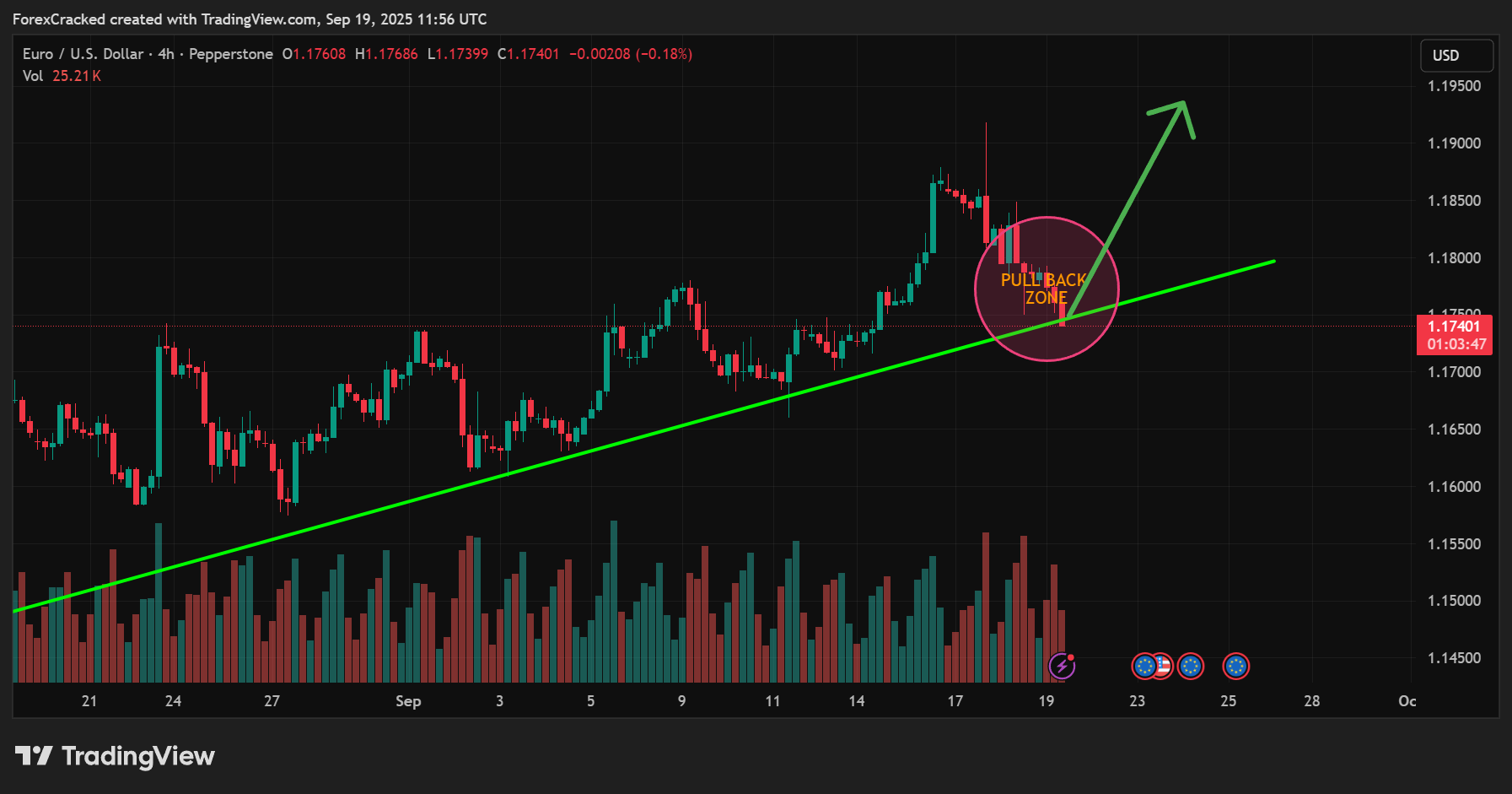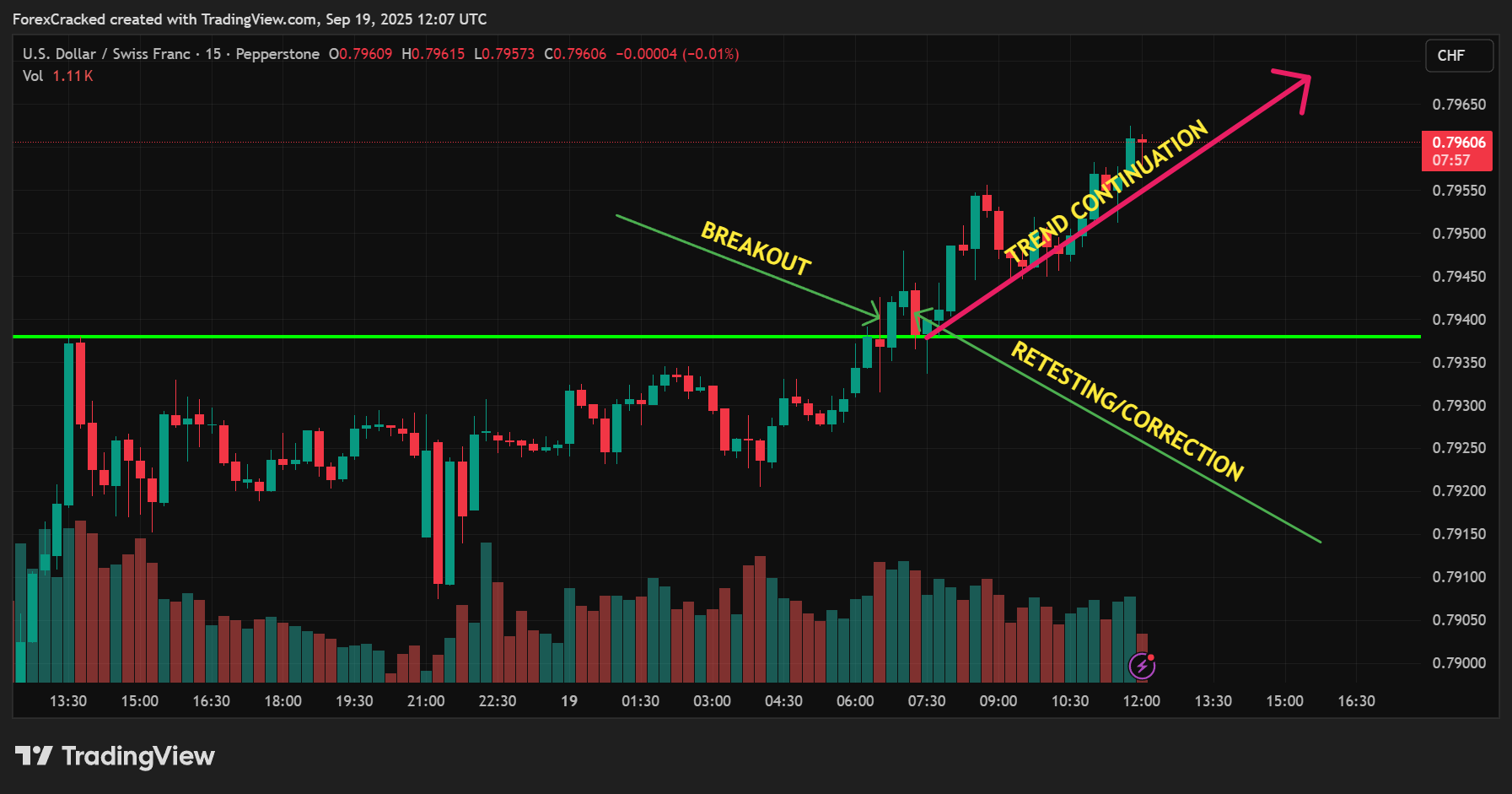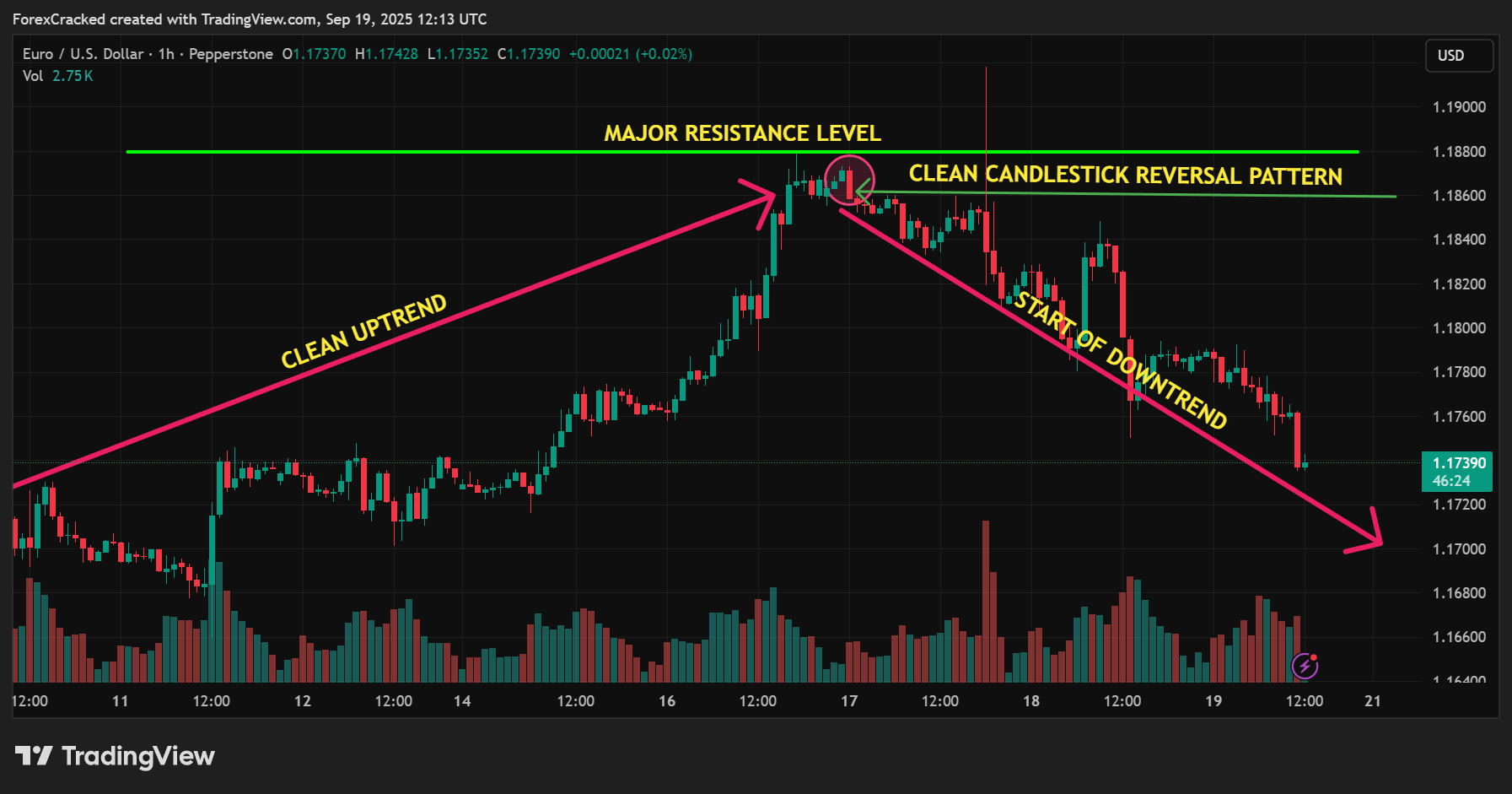Passing a prop firm challenge and keeping a funded forex account isn’t about chasing “holy grail” indicators it’s about using simple, disciplined strategies that fit the firm’s rules. With strict limits on daily drawdowns, overall losses, and sometimes even news trading, you need a plan that’s both profitable and rule-compliant. That’s where prop firm trading strategies come in.
In this guide, we’ll break down the top 5 prop firm trading strategies that actually work. Whether you’re new to prop firm challenges or already managing a funded account, these approaches are designed to give you structure, consistency, and confidence.
You’ll learn how to trade trends and pullbacks, master breakout retests, spot session reversals, handle news events, and even swing trade without breaking firm rules. Each strategy comes with clear steps, risk tips, and adjustments to stay within prop firm requirements so you can trade smarter, not riskier.
Table of Contents
Prop Firm Rules Shape Every Strategy

Before diving into the actual strategies, it’s crucial to understand the rules that prop firms enforce. These aren’t suggestions they are hard boundaries that determine whether you pass, fail, or keep your funded account.
Daily Loss Limits
Most firms cap daily drawdown around 4–5% of the account balance. Think of this as a hard stop-loss for the entire account. If you hit this limit, the firm will usually cut off your trading for the day or even terminate your challenge. To stay safe, many funded traders set a personal limit of 2–3% per day so unexpected spread spikes or slippage don’t push them over the edge.
Overall Loss Limits
In addition to daily rules, firms also enforce an overall loss limit, often around 8–10% of the starting balance. This means your long-term risk management matters just as much as your daily plan. One oversized trade or stacking too many correlated pairs can wipe out the entire account in one move.
News Trading Restrictions
Another key rule is news trading. Many firms restrict trading around major events like NFP, CPI, or FOMC meetings, since spreads widen and slippage increases during high-volatility news. Some firms ban news trading altogether, while others only require you to close positions a few minutes before or after releases. Always confirm your firm’s specific policy breaking this rule can mean instant disqualification.
Build Your Strategy Around the Rules
The most important takeaway: strategy comes second, compliance comes first. You could have the sharpest setup in the world, but if it violates the firm’s limits, it doesn’t matter you’ll still lose your account. Successful prop traders treat firm rules as non-negotiable, then design strategies, position sizing, and trade frequency around them.
Top 5 Prop Firm Trading Strategies That Works

1. Trend-Pullback Strategy (Higher-Timeframe Bias, Lower-Timeframe Trigger)

The trend-pullback strategy is one of the most reliable and prop-firm-friendly approaches you can use. Instead of chasing every candle, you’re waiting for the market to pull back into a key level before rejoining the main trend. This keeps you aligned with momentum, filters out a lot of false moves, and helps protect your account from unnecessary losses.
When to Use It
This setup is best when you want fewer, higher-quality trades. It works equally well for day traders looking at intraday swings and for swing traders who prefer to hold positions for several days. Because it naturally limits over-trading, it’s ideal for prop firm challenges, where hitting daily loss limits is often the biggest reason traders fail.
How the Setup Works
- Find the higher-timeframe trend – Use the daily (D1) or 4-hour (H4) chart and check the slope of the 20/50 EMA plus price structure. Are we in a clear uptrend or downtrend?
- Mark the pullback zone – Look for confluence at a prior swing point, a fair value gap (FVG)/imbalance, or the 50–61.8% Fibonacci retracement.
- Drop to a lower timeframe (M15–M5) – Wait for a confirmation signal: a strong engulfing candle, a break of structure (BOS), or a momentum push back in the trend’s direction.
- Manage risk and reward – Risk 0.25–0.75% per trade, size positions based on stop-loss distance, and aim for 1.5R–3R profits. Many traders scale out partial profits at 1R to lock in gains.
Why Prop Firms Like This Approach
- Risk control: Low risk per trade reduces the chance of breaching daily or total drawdown limits.
- Rule compliance: Because you’re trading with the trend and waiting for pullbacks, you avoid taking excessive or impulsive entries that could pile up losses.
- Built-in patience: The market won’t give a valid pullback every hour, which naturally stops over-trading a common prop firm killer.
Prop-Friendly Tweaks
- Don’t stack correlated trades. If EURUSD, GBPUSD, and AUDUSD are all showing similar pullbacks, pick the cleanest one. Multiple correlated trades can sink you if the USD suddenly spikes.
- Set a floating DD guardrail. If your daily drawdown reaches 3–4% on a 5% limit, close positions and protect the account. Living to trade another day is more important than squeezing one extra R multiple.
2. Break-and-Retest Strategy (Session Structure Trading)

The break-and-retest strategy is one of the cleanest and most rule-based ways to trade prop firm challenges. It’s popular among intraday traders because it works best during high-volume sessions like London and New York, where price often breaks out of overnight ranges and tests those levels before continuing in the same direction.
When to Use It
This strategy is perfect if you prefer clear structure and logical entry points. Instead of guessing where the market might go, you wait for confirmation: a level is broken, then retested, and only then do you step in. It naturally reduces impulsive trades and gives you a structured framework, which is critical when daily loss limits are in play.
How the Setup Works
- Identify the range or key level – On the M30–M15 timeframe, mark out the Asia session range or the prior session’s high and low. These levels often act as launch points when London or New York opens.
- Wait for the breakout – Look for a decisive break with volume at session open. Avoid fakeouts by waiting for a clean close beyond the level.
- Watch for the retest – Price will often pull back to the broken level. This is where you wait patiently.
- Enter on confirmation – Trigger the trade on a strong rejection candle (like an engulfing bar) in the direction of the breakout. Place your stop just beyond the retest wick.
- Target liquidity zones – Your first targets can be the next liquidity pool, such as the opposite end of the range or the Average Daily Range (ADR) projection.
Risk & Trade Management
- Keep risk between 0.5–1% per trade.
- Limit yourself to 2–3 trades per day to avoid over-trading.
- Always size your position based on the stop distance, not on how confident you feel.
Why This Works for Prop Firm Traders
- Rule alignment: You’re trading during high-liquidity sessions, which often means cleaner moves and less slippage compared to random hours.
- Clear invalidation: Stops are placed beyond obvious levels, making risk easy to define.
- Reduced over-trading: By waiting for both a break and a retest, you avoid the trap of entering every breakout.
Prop-Friendly Tweaks
- Avoid news traps. If the breakout happens right before tier-1 news (like NFP or CPI), it’s often a fake move. Unless your firm allows news trading and you’ve accounted for spread widening, it’s safer to skip that setup.
- Protect daily drawdown. If your first trade fails and you’re already close to your daily loss limit, don’t chase another breakout the same session. The best way to pass a challenge is consistency, not recovery trading.
3. Session Reversal Fade (Trading Extreme Moves)

The session reversal fade strategy is not an everyday play it’s a precision tool designed for rare but powerful opportunities. Instead of chasing trends, this strategy looks to catch the moment when an overextended session run exhausts itself and reverses. For prop firm traders, it can deliver some of the highest reward-to-risk trades but only if you’re disciplined enough to wait for the perfect setup.
When to Use It
This strategy works best for intraday traders with patience and discipline. It’s a low-frequency play, meaning you might only see it a few times a week, but when it sets up correctly, it often delivers 2–4R or more in a single trade. It’s especially useful during London and New York sessions, when price frequently overshoots its daily range before snapping back.
How the Setup Works
- Spot the extended move – Look for one-sided session runs that stretch well beyond the Average Daily Range (ADR), typically 1.25–1.5× ADR. These moves often indicate exhaustion.
- Check higher-timeframe levels – Confirm that price is reaching a strong supply or demand zone on the H4 or Daily chart. These areas often act as magnets for reversals.
- Wait for a liquidity sweep – Price will often push slightly beyond the HTF level, grabbing stops before reversing. This is your cue that smart money may be shifting direction.
- Confirm on a lower timeframe – On the M5 chart, wait for a structure shift:
- For shorts: a lower high forming after the liquidity sweep.
- For longs: a higher low after the sweep.
- Manage entry and stops – Enter on confirmation, place your stop just beyond the sweep, and target 2–4R. Keep management tight, since reversals can be sharp but also fail quickly.
Risk & Money Management
- Keep risk very small: 0.25–0.5% per trade.
- Limit yourself to one attempt per day this setup is not meant for repeated tries.
- Trail aggressively once the move begins, as reversals can reverse back just as fast.
Why It Works for Prop Firm Trading
- High reward-to-risk: A single clean setup can push you closer to your profit target without breaching loss limits.
- Clear criteria: You’re not guessing; you wait for price to extend beyond ADR and sweep liquidity.
- Patience-focused: Helps avoid over-trading, which is a common reason traders blow challenges.
Prop-Friendly Tweaks
- Stop after one loss. If your first fade doesn’t work out, call it a day. Chasing another reversal is the fastest way to blow through a daily loss limit.
- Don’t force it. If the market hasn’t run far enough beyond ADR, skip the setup. Forcing this trade in normal conditions usually leads to unnecessary losses.
- Respect firm timing rules. If a sweep happens during restricted news windows, stand aside even if it looks perfect.
Download a Collection of Indicators, Courses, and EA for FREE
4. News-Momentum Continuation (Trade Only If Rules Allow)

Trading around news events can be explosive but also risky. The news-momentum continuation strategy is built for traders whose prop firm explicitly allows news trading. If your firm restricts it, you can still adapt this approach into a post-news continuation play once spreads calm down.
When to Use It
This setup is for traders who understand slippage, widened spreads, and fast-moving price action. It works best during major releases like CPI, NFP, FOMC, or interest rate decisions, when volatility can create strong one-directional moves. If you enjoy momentum and fast execution, this strategy can deliver but only if you stay within prop firm policies.
How the Setup Works
- Build your bias beforehand – Don’t go in blind. Use the broader macro context (e.g., CPI trend, recent rate hikes) and higher-timeframe structure to decide whether the market is more likely to rally or dump.
- Wait after the release – When the number drops, spreads can explode. Instead of jumping instantly, wait 1–3 minutes for spreads to normalize and for the first pullback to form.
- Enter on continuation – Drop to a lower timeframe (M1–M5) and look for a clean continuation pattern like a flag, pullback candle, or mini break-and-retest.
- Adjust stops and sizing – Use a wider stop than normal to account for spread spikes, and cut your risk down to 0.25–0.5% per trade. This way, even if slippage hurts, you stay within prop limits.
Why It Works for Prop Firm Traders
- Momentum-driven: Big news events often set the market’s direction for the entire session.
- Clear confirmation: Instead of guessing the number, you wait for the market’s reaction.
- Rule alignment: When firms allow news trading, this setup gives you structure instead of gambling at release.
Prop-Friendly Tweaks
- Know the blackout rules. Many firms enforce flat positions minutes before and after major events. Violating this can instantly void your account so confirm your firm’s exact timing policy.
- Shift to post-news trades if needed. If your firm doesn’t allow trading the event itself, wait 10–30 minutes after the release. By then, spreads settle and the continuation setup often still plays out.
- Don’t overtrade news. One clean continuation setup is enough. Chasing every spike can quickly breach your daily drawdown.
5. Swing Trend-Following (Overnight and Multi-Day Trading)

The swing trend-following strategy is perfect for traders who don’t want to sit in front of the screen all day. Instead of scalping every intraday move, you focus on the bigger picture catching multi-day legs in strong trends. This style often means fewer but more impactful decisions, making it easier to manage both risk and emotions, as long as your prop firm allows overnight and weekend positions.
When to Use It
This approach suits traders who:
- Prefer patience over frequency, with fewer trades per week.
- Can tolerate overnight risk and possible weekend gaps.
- Want to align with the broader market flow rather than intraday noise.
It’s also great if you find intraday trading stressful or if you struggle with overtrading during prop firm challenges.
How the Setup Works
- Identify the higher-timeframe trend – Use the Daily (D1) and 4-hour (H4) charts to confirm direction with tools like the 20/50 EMA or classic support/resistance.
- Wait for pullbacks – Look for price retracing to key levels or EMA zones. These are often high-probability continuation points.
- Trigger entries on lower timeframes – Refine entries on H4 or M30, waiting for a strong rejection or break-of-structure signal.
- Manage trades across days – Take partial profits at 1R to secure equity, then trail stops under swing structure to ride the trend for multiple days.
Risk & Trade Management
- Keep risk conservative: 0.25–0.75% per trade, since gaps can blow past stop-loss levels.
- Limit open exposure across correlated pairs (e.g., EUR/USD and GBP/USD at the same time).
- Always size down positions to account for overnight volatility.
Why It Works for Prop Firm Traders
- Reduced decision fatigue: Fewer trades mean less pressure to constantly monitor charts.
- Larger moves: Trends that play out over days can hit profit targets faster than choppy intraday markets.
- Better challenge pacing: Instead of stacking 10 intraday trades, a few strong swing positions can push you toward the profit goal while staying within risk limits.
Prop-Friendly Tweaks
- Choose the right firm. Not all prop firms allow overnight or weekend holds. Pick one with flexible holding policies and no strict time-in-trade limits.
- Mind weekend gaps. If your firm allows weekend positions, size down or hedge if holding through Friday close. Gaps can easily exceed stop losses.
- Log swings like projects. Track each swing trade as a multi-day plan rather than a quick in-and-out. This mindset helps with discipline and rule compliance.
Risk Management That Actually Passes Prop Firm Challenges

Having a profitable setup is important, but in the world of prop firm trading, it’s risk management that decides whether you pass or fail. Many traders lose challenges not because their strategy doesn’t work, but because they ignore firm rules around drawdowns and overexposure. Here’s how to structure risk so you can stay in the game and grow consistently.
Position Sizing First, Setup Second
Before thinking about entries or indicators, start with position sizing. Calculate trade size based on:
Account risk ÷ trade risk (stop distance)This ensures you’re risking the same percentage of your account on every trade, regardless of stop size. Keep your per-trade risk at or below 1%, and many funded traders even stay between 0.25–0.5% to give themselves more breathing room. This approach protects you from sudden losses and aligns perfectly with prop firm rules.
Daily Loss Guardrails
If your firm has a 5% daily loss limit, don’t risk right up to that line. Instead, set a personal circuit breaker at ~3%. This way, if spreads widen or slippage hits, you won’t accidentally breach the limit. Think of it like a seatbelt your rules should always be tighter than the firm’s rules.
Max Exposure Rule
One idea = one cluster. If you’re heavy on USD pairs, don’t open three trades that all depend on the dollar moving the same way. That’s not diversification it’s triple the risk. Instead, pick the cleanest setup in that cluster and stick with it. This helps keep both daily and overall loss limits safe.
Scheduled Risk-Off Mode
Tier-1 news like NFP, CPI, or FOMC often causes spreads to blow out and stops to slip. If your prop firm restricts news trading, you must be flat before the release. Even if they allow it, you should still manage risk carefully either reduce position size or wait for volatility to settle. Protecting your account during these high-risk moments is smarter than trying to gamble on unpredictable spikes.
Aim for a Smooth Equity Curve
Forget “hero days.” Passing challenges and keeping a funded account is much easier if you focus on steady, low-volatility growth. Aim for smaller, consistent wins rather than big boom-and-bust swings. Prop firms love traders who show discipline and stability it signals professionalism and long-term survival.
Execution Checklist
- Know the rules (daily/overall loss, news, weekend/overnight, lot limits).
- Pick ONE strategy from the 5 above and run it for 20–50 trades before changing.
- Risk 0.25–1% per trade; size from the stop.
- Pre-session plan: bias, key levels, invalidation, news schedule.
- Take partials at 1R (optional), then trail or target 2–3R.
- Stop trading for the day after your max daily draw or 2 losses.
- Journal: screenshot, reason to enter, reason to exit, rule compliance.
FAQs
1. What’s the best prop firm trading strategy for beginners?
The trend-pullback and break-and-retest plays are simple, rule-based, and prop-friendly. Start with one and master it before adding complexity.
2. How much should I risk per trade to pass a challenge?
Common retail guidance is ≤1–2% per trade; many funded traders go even lower (0.25–0.75%) to reduce daily drawdown spikes. Calculate size from account risk ÷ stop distance.
3. Can I trade news on a prop account?
It depends on the firm. Many require you to flatten before/after tier-1 events (NFP, CPI, FOMC), while some allow it with conditions. Always verify your firm’s policy.
4. Day trading or swing trading for prop firms?
Both work. Swing offers fewer decisions and bigger moves but has gap risk; day trading offers more reps but demands stricter emotional control. Choose what fits your life and rules.
5. What’s the #1 reason traders fail challenges?
Breaching daily/overall loss usually by oversizing, stacking correlated positions, or trading through restricted news. Build the plan around the rules first.
Ready to Level Up? Join DNA Funded Prop Firm Today

If you’re serious about turning discipline into profit, the next step is clear: apply what you’ve learned and test it where it matters. DNA Funded Prop Firm offers transparent rules, fair challenge conditions, and real funding just what disciplined traders need.
Take action now:
- Register for DNA’s evaluation challenge.
- Apply one of the prop firm trading strategies above.
- Manage risk carefully (especially daily/overall loss and news windows).
- Track your results and stay consistent.
Start with DNA Funded and see how far your strategy, patience, and smart risk management can take you. Your funded-trader journey begins here.
Conclusion
Succeeding with prop firm trading strategies isn’t about chasing flashy setups or doubling your account overnight it’s about discipline, risk management, and consistency. The five approaches we covered trend-pullback, break-and-retest, session reversal fade, news-momentum continuation, and swing trend-following work because they’re structured, repeatable, and built around prop firm rules. Focus on mastering one, protecting your account, and growing steadily, and you’ll give yourself the best chance to not only pass a challenge but stay profitable as a funded trader.







